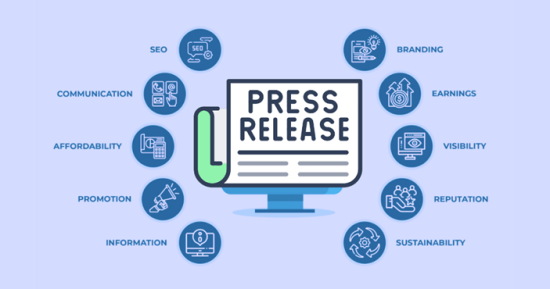
Did you know that over 50% of small businesses in the United States have been denied traditional bank loans due to insufficient documentation? This startling statistic highlights the growing demand for alternative financing options, especially among entrepreneurs and startups. Enter the world of no doc business loans – a form of commercial borrowing that doesn’t require extensive paperwork, making it an attractive solution for those in need of quick access to capital.
No-doc business loans, also known as no documentation loans, are a unique type of financing that cater to the needs of entrepreneurs and small business owners who may not have the extensive financial records typically required by traditional lenders. These loans offer a more streamlined application process, faster approval and funding times, but they come with a tradeoff – higher interest rates and shorter repayment terms.
The term “no-doc” can be slightly misleading, as these loans still require some level of documentation during the application process. However, compared to traditional business loans, the documentation requirements are significantly reduced. Lenders that offer no-doc loans tend to focus on alternative risk factors, such as the borrower’s credit score, collateral, or the value of their outstanding invoices, rather than relying solely on financial statements and tax returns.
This flexibility can be a game-changer for entrepreneurs and startups who need to secure funding quickly, without the hassle of lengthy application processes and extensive documentation requirements. No-doc loans can provide a lifeline for businesses that may not have the traditional financial records lenders typically demand.
What is a No Doc Business Loan?

A no-doc business loan refers to a form of commercial borrowing that requires minimal documentation from the borrower, such as only business bank statements, to apply. These loans are different from traditional small business loans, which typically require extensive documentation like tax returns, financial statements, and other proof of the company’s financial health. No-doc business loans are designed to provide faster access to capital with a more streamlined application process.
Definition and Explanation
While no-doc business loans don’t require the same level of documentation as bank or SBA loans, they still generally call for some basic information, such as the business owner’s credit score, proof of business ownership, and government-issued identification. This type of financing is often sought by entrepreneurs or small business owners who need quick access to capital but may not have the extensive documentation typically required for traditional business loans.
Minimal Documentation Required
The reduced documentation requirements of no-doc business loans can make them an appealing option for business owners who need a loan but don’t have a robust financial history or tax records. However, this increased risk for the lender often translates to higher interest rates and shorter repayment terms for the borrower. Lenders that offer no-doc or low-doc business loans typically base their lending decisions on factors like the amount of collateral the borrower can provide or the value of their outstanding invoices, rather than extensive financial statements.
| Requirement | Traditional Business Loan | No-Doc Business Loan |
|---|---|---|
| Tax Returns | Required | Not Required |
| Financial Statements | Required | Not Required |
| Business Bank Statements | Often Required | Often Required |
| Collateral | May Be Required | Often Required |
| Credit Score | Considered | Considered |
By focusing on alternative risk mitigants instead of deep financial histories, these lenders can provide faster approval and funding with less paperwork. However, the tradeoff is often higher interest rates and shorter repayment terms compared to traditional bank or SBA loans.
How Do No Doc Business Loans Work?
The documentation that traditional lenders require, such as tax returns and financial statements, helps them assess a business’s can i get a loan without itr? ability to repay a loan. Lenders that offer no-doc or low-doc business loans typically base their lending decisions on other factors, like the amount of collateral the borrower can provide or the value of their outstanding invoices.
By relying on these alternative risk mitigants, no-doc lenders can offer financing with fewer paperwork requirements. However, this increased risk for the lender often translates to higher interest rates and shorter repayment terms for the can we get business loan on salary? borrower. No-doc loans aim to provide faster access to capital, but come at a higher cost compared to more traditional business financing options.
For entrepreneurs and small business owners, can i get a mudra loan? no-doc business loans can be a quick and convenient solution for securing capital. These lenders focus on factors like collateral or invoice values rather than extensive financial histories, allowing them to provide financing with minimal documentation requirements. This streamlined application process can lead to faster approval and funding times. However, the tradeoff is often higher interest rates and shorter repayment terms compared to traditional bank or is gst mandatory for a mudra loan? SBA loans.
By understanding how no-doc business loans work, borrowers can make an informed decision about whether this type of financing is the right fit for their business needs and financial goals. While the convenience of no-doc loans can be appealing, it’s important to carefully weigh the potential costs and drawbacks against the potential benefits.
what banks offer no doc bus?
While there are no traditional banks that specifically offer “no-doc” business loans, there are several online lenders and alternative financing providers that offer business loans with minimal documentation requirements. Some examples of lenders that offer nearly no-doc business loan options include OnDeck, BlueVine, FundBox, and American Express.
These lenders typically only require basic information like the business owner’s credit score, proof of business ownership, and a few months of recent bank statements, rather than extensive financial documents. By focusing on factors like collateral or invoice values instead of deep financial histories, these lenders can provide faster approval and funding with less paperwork. However, the tradeoff is often higher interest rates and shorter repayment terms compared to traditional bank or SBA loans.
Entrepreneurs and small business owners who need quick access to capital without the hassle of extensive documentation may find these nearly no-doc loan options from alternative lenders to be a suitable solution, despite the higher costs. The ability to secure financing with minimal paperwork can be a significant advantage for businesses that don’t have the time or resources to gather extensive financial records.
It’s important to carefully research and compare the options from these alternative lenders, as the specific requirements, interest rates, and repayment terms can vary. By understanding the trade-offs and evaluating their unique business needs, borrowers can determine if a nearly no-doc business loan is the right financing choice for their situation.
Types of Nearly No-Doc Business Loan Options

When it comes to securing financing for your business with minimal documentation, there are several options to consider beyond traditional bank loans. These “nearly no-doc” business loan alternatives can provide faster access to capital, though they often come with higher interest rates and shorter repayment terms. Some of the most common types of nearly no-doc business loan options include:
Unsecured Short-Term Business Loans
Unsecured short-term business loans allow entrepreneurs to borrow lump sums of capital without the need for collateral or extensive financial records. These loans typically feature repayment periods of 6-24 months and can be a good solution for how to get 20, 000 rupees urgently or other short-term financing needs. The streamlined application process makes them an attractive option for how can i get a loan in 5 minutes.
Business Line of Credit
A business line of credit provides access to a pool of funds that can be drawn upon as needed, similar to a credit card. Lenders may only require basic information like bank statements and a credit check, rather than comprehensive financial documentation, to approve a line of credit. This can be a valuable resource for can i get a 2 lakh loan without income proof.
Invoice Factoring
Invoice factoring allows businesses to sell their outstanding invoices to a third-party lender in exchange for a lump sum of cash, typically up to 85% of the invoice value. This type of financing is based on the strength of the business’s accounts receivable, rather than its overall financial history, making it a viable option for how to get 20, 000 rupees urgently.
Invoice Financing
Similar to invoice factoring, invoice financing enables businesses to access capital by using their unpaid invoices as collateral. The key difference is that the business retains control over the invoices and collects payments directly from customers, while the lender provides an advance on the total invoice amount.
Merchant Cash Advances
Merchant cash advances provide lump-sum financing in exchange for a percentage of the business’s future credit card or debit card sales. These advances are based on the company’s sales volume rather than its credit history or financial statements, making them a potential solution for can i get a 2 lakh loan without income proof.
While these nearly no-doc business loan options can be attractive for their speed and convenience, it’s important to carefully evaluate the terms, fees, and long-term impact on your company’s finances before committing to any financing arrangement.
Pros and Cons of No Doc Business Loans
When it comes to no-doc or low-doc business loans, there are several advantages and disadvantages to consider. Understanding the pros and cons can help entrepreneurs and small business owners make an informed decision about whether this type of financing is the right fit for their needs.
Pros
The primary advantage of no-doc business loans is the speed and convenience they offer. With minimal paperwork required, these loans can provide quick access to capital, often with funding in as little as a few business days. This can be particularly beneficial for businesses that need to secure a larger loan of up to 50 lakh or more without the extensive documentation typically required by traditional lenders.
Another pro is the flexibility that no-doc loans provide. They can be a viable option for entrepreneurs seeking a Mudra loan or for businesses that may not have extensive financial records or tax returns to submit. This makes them appealing for startups, freelancers, and small businesses that are still in the early stages of development.
Cons
The primary drawback of no-doc business loans is the higher cost. Lenders take on more risk by providing financing with minimal documentation, so they typically charge significantly higher interest rates compared to traditional bank loans or Mudra loans that may require GST registration. Additionally, no-doc loan terms are usually much shorter, with repayment periods often capped at 24 months or less.
Another potential con is the limited options available for businesses that need to obtain a loan without providing income tax returns. While there are several online lenders and alternative financing providers that offer no-doc or low-doc loans, the selection may be more limited compared to traditional bank loan products.
How to Get a no doc business loan
To obtain a no-doc or low-doc business loan, the process typically involves several key steps:
Research and Compare Lenders
Start by researching and comparing various lenders that offer no-doc or low-documentation business loans. Online lenders like OnDeck, BlueVine, and FundBox are examples of providers that specialize in this type of financing with minimal paperwork requirements. Evaluate their eligibility criteria, interest rates, repayment terms, and overall customer reviews to find the best fit for your business needs.
Evaluate Loan Factors
Once you’ve identified potential lenders, carefully consider the various factors that will impact your no-doc business loan, such as the amount of capital you need, the intended use of the funds, and your ability to provide collateral or alternative forms of risk mitigation. Understanding these key elements will help you select the most suitable no-doc loan option.
Submit Application

With your research and evaluation complete, you can then proceed to submit your application for a no-doc business loan. The application process for these types of loans is generally faster and more streamlined compared to traditional bank loans, often only requiring basic information like your business’s revenue, credit score, and proof of ownership. Be prepared to provide any necessary documents or supporting materials requested by the lender during the application stage.
By following these steps, you can increase your chances of securing a no-doc or low-doc business loan that meets your financing needs while minimizing the hassle and documentation required.
No Doc Loan Approval Process
The approval process for no-doc or low-doc business loans is generally faster and more streamlined compared to traditional bank loans. Lenders that offer these types of financing options typically have the following key steps in their approval process:
- Online Application – Borrowers can typically submit a simple online application, providing basic information about their business, financial history, and loan requirements. This streamlined process avoids the lengthy paperwork associated with conventional loan applications.
- Credit Assessment – Instead of analyzing extensive financial documentation, lenders will assess the borrower’s credit profile, including their credit score, business history, and outstanding debt obligations. This allows for a quicker decision-making process.
- Collateral or Invoice Review – Many no-doc lenders focus on alternative forms of risk mitigation, such as the value of the borrower’s outstanding invoices or available collateral, rather than comprehensive financial statements.
- Fast Approval and Funding – With a more simplified approval process, no-doc lenders can often provide a lending decision and release funds within a matter of days, rather than the weeks or even months required for traditional business loans. This makes them an attractive option for how to get 20, 000 rupees urgently or how can i get a loan in 5 minutes.
By streamlining the application and underwriting procedures, no-doc lenders are able to offer financing solutions for small businesses and entrepreneurs who may not meet the stringent requirements of banks or the SBA, including those seeking a 2 lakh loan without income proof.
Interest Rates and Fees
One of the key trade-offs of obtaining a can i get a 50 lakh loan? business loan is the higher interest rates and fees charged by lenders. Since these types of financing options involve less documentation and carry more risk for the lender, they typically come with double-digit interest rates that can be significantly higher than traditional bank loans.
Higher Rates
No-doc and low-doc business loans often have annual percentage rates (APRs) ranging from is gst mandatory for a mudra loan? to as high as 40% or more. This is in contrast to bank loans and SBA financing, which may have APRs in the single digits or low double digits. The increased risk assumed by the lender is reflected in the substantially higher interest rates charged on these more streamlined business loan products.
Potential Fees

In addition to the elevated interest rates, can i get a loan without itr? business loans may also come with various fees that can add to the overall cost of borrowing. These can include origination fees, early repayment penalties, and administrative charges. Borrowers need to carefully review the fine print and understand all the potential fees associated with a no-doc or low-doc loan before signing on the dotted line.
Repayment Terms and Schedules
When it comes to no-doc business loans, the repayment terms and schedules are typically much shorter compared to traditional bank or SBA loans. While conventional small business loans may have 5-year or even 10-year repayment periods, no-doc loans usually max out at 24 months or less. This faster repayment timeline is a tradeoff for the convenience and speed of accessing capital without extensive documentation.
Entrepreneurs and small business owners who opt for can we get business loan on salary? or can i get a 50000 loan without salary slip? may find themselves needing to make larger, more frequent payments to the lender. This accelerated repayment schedule can put a strain on cash flow, especially for businesses that are still in the early stages of growth.
On the other hand, the short-term nature of no-doc loans can also be beneficial for borrowers who need quick access to funds and plan to repay the loan quickly. Can i get a loan from google pay? or how to get a loan without any document? can provide a faster solution compared to traditional loan options, albeit at a higher cost.
Ultimately, the repayment terms and schedules of no-doc business loans should be carefully evaluated to ensure they align with the borrower’s financial capabilities and business needs. Careful planning and budgeting is crucial to ensure the timely repayment of these loans without creating undue financial stress.
Alternatives to No Doc Business Loans
While no-doc business loans offer a faster, more streamlined path to financing, they come at a significant cost in the form of higher interest rates and less favorable repayment terms. For entrepreneurs and small business owners who can meet the more stringent requirements, there are several alternatives to consider:
Traditional Bank Loans
Traditional bank loans, while requiring more extensive documentation, can often provide lower interest rates and longer repayment periods than no-doc options. Businesses that have a strong financial history, collateral, and a good credit profile may qualify for more favorable terms from traditional lenders like banks or credit unions.
SBA Loans
Small Business Administration (SBA) loans are another viable alternative for can i get a 50 lakh loan?, can i get a mudra loan?, and is gst mandatory for a mudra loan? SBA-backed loans tend to have lower interest rates and longer repayment terms compared to no-doc options, but the application process is more involved and may require additional documentation.
Business Credit Cards
For businesses that need quick access to capital for smaller expenses or short-term financing needs, can i get a loan without it? business credit cards can be a viable alternative to no-doc loans. While interest rates may be higher, credit cards offer the convenience of on-demand access to funds and typically have less stringent documentation requirements than traditional business loans.
Conclusion
In conclusion, no-doc business loans can provide a flexible and fast solution for entrepreneurs and small business owners who need quick access to capital. However, the convenience of these loans comes at a significant cost in the form of higher interest rates, shorter repayment terms, and potentially onerous fees.
Ultimately, no-doc business loans can be a viable choice for some small businesses, but they should be considered within the broader context of the company’s financial needs, growth plans, and long-term sustainability. By carefully evaluating all available financing options, business owners can make an informed decision that best aligns with their unique circumstances and goals.
FAQs on No Doc Business Loans
What are No Doc Business Loans?
No-doc business loans do not require extensive documentation, such as tax returns or financial statements, for approval. However, it’s worth noting that some lenders may still request certain documents, such as bank statements or proof of business ownership, to verify the information provided. They are typically based on credit score and business revenue.
Who qualifies for No Doc Business Loans?
No-doc business Loans, accessible to businesses with substantial revenue and good credit history, are ideal for business owners need quick access to funds without the hassle of extensive paperwork.
Are interest rates higher for No Doc Business Loans?
Interest rates for No-Doc Business Loans are generally higher due to the increased risk to lenders posed by the lack of detailed financial documentation. For instance, they can range from [5% to 15%], depending on the lender and the borrower’s creditworthiness.






